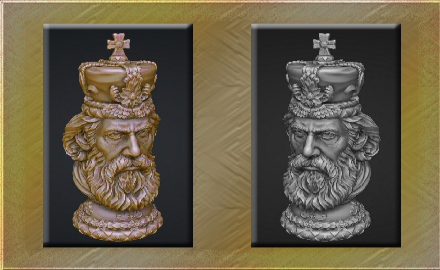|

“Chess reveals the inner lives and characters of men
and women”
With few exceptions, the really big international stars of Chess are definitely larger than life. Their talent, appearance, strength of character and general ambience single them out from lesser mortals, and the mark of the truly big international star is the ability to stand out without consciously and constantly striving to do so.
Admittedly, there are the ornate Staunton Chess pieces on the sumptuous chequered board itself at its most magnificent, the Marie Therese crystal chandeliers, the $1,500 suits that makes them appear almost presidential and those fancy Swiss Rolex watches with matching oyster bracelets which have been used by generations of adventurers and explorers that contain over 200 parts, 29+ synthetic ruby bearings meticulously engineered in pursuit of absolute reliability and tested for hundreds of hours by the Controle Officiel Suisse des Chronometres in Geneva.

John Ridgway (explorer) rowed across the North Atlantic in an open boat, trekked the length of the Amazon from source to sea, made the first crossing of the Gran Campo ice-cap in Patagonia, embarked on a non-stop voyage around the world, sailed his entire family from Scotland to Antarctica via Polynesia (a perilous odyssey of 18 months) and paddled alongside the first woman (his daughter) ever to canoe round Cape Horn while wearing a Rolex Oyster which survived hurricanes, blizzards, icebergs and tropical storms.
But, when in play these incidentals fade into the background of the overall image. It is the talent and the personality that rivet the attention and admiration of an audience. Such fame, fortune and truly larger-than-life image inevitably draws others by its magnetic attraction. They live in a world where every hand is turned against every other hand - even their closest friends. Nathaniel Cook designed the six Staunton Chess piece set which is still used today as the standard set of symbols for traditional occidental competitions. The Elgin Marbles were the inspiration for the Knight.
Howard Staunton organized a tournament in London in 1851 and published an annotated account of the competition which attracted many new players to the game.
With fanciful games the talk of many a gentlemen's club, the game which ignited the world took place in London in 1851 and is now known as The Immortal Game, which was played between Anderssen and Kieseritzky.
Over the last two centuries many players have risen to rank amongst the immortals of the game.
The Chess worlds Chevaliers of the Legion dHonneur/Croix de Guerre would include Philidor, Staunton, Anderssen, Morphy, Steinitz, Lasker, Capablanca, Alekhine, Euwe, Botvinnik, Karpov, Smyslov, Tal, Petrosian, Spassky, Nimzowitsch and of course, Fischer, who are just a few that have been elevated to the Chess worlds order of the purple.
Kasparov was the worlds greatest artist on a canvas of 64 cells and deservedly considered the strongest traditional Chess player in the history of our oldest game.
Even now, as I write, there are players and programmers preparing for an
expedition to conquer Mount Kasparov and defeat the
reigning World Champion. The most recent effort by Anand
of India (1995) has not been successful (please see
section dealing with the set of games played between
these two players for a detailed blow by blow account).
[Note: Kasparov has recently lost the world title].
Chess reveals the inner lives and characters of the men/women who, escaping madness, can unremittingly devote all of their mental energy during 10, 20, 30 or 40+ years to the ludicrous effort of cornering a wooden King on a chequered wooden board. Today, the top players are celebrities on the international stage and the tournaments at home and abroad command the ardent following of Chess connoisseurs worldwide.
Their magnetic presence has elevated the game to national importance and convinced the world that being a Chess player is respectable, even romantic. Some have become folk heroes with reputations that cross oceans and many generations. Along with the global fame and whispering reverence comes the immortality that goes with casual mention in a Chess handbook.
The year 1970 saw the introduction of the Elo rating system to assess a players Chess playing strength. On reaching 2500+ s/he is made a GM of the traditional game. In 1974, the first world computer championship was held in Stockholm, Sweden, and in 1988 a Chess computer program defeated a GM for the first time (please see
Kasparov versus Deep Blue).
|